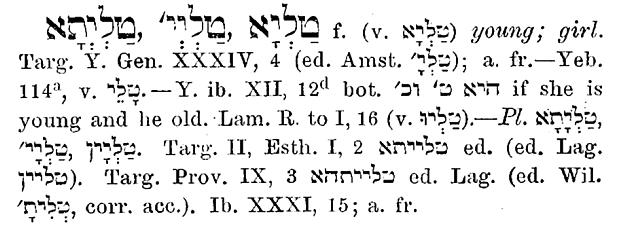This is my favorite use of Aramaic in the New Testament.
Overview of this series
Many scholars conjecture Aramaic underpinnings to much of the Greek in the New Testament. They will cite “Semitic influence,” “semiticisms,” or “Aramaisms.” The point is that a lot of the writers of the NT were GSL people (Greek as a second language). Some people used to think that parts of the NT were originally written in Hebrew or Aramaic (especially the Gospel of Matthew), but very few people hold that anymore. Most folks think that the NT was written by Aramaic speakers who were bilingual in Greek. Although some deny knowledge of Aramaic or Hebrew to certain NT authors.
What I want to do in these posts is highlight something more specific: the use of transliterated Aramaic in the NT. “What weird idea!” you might say. But these curious words are often misunderstood or simply not understood since they are rarely translated into English, they are simply transliterated (i.e. the sounds are reproduced by English letters) from Greek because they were transliterated into Greek from Aramaic. Now, this gets a little complicated because the Greek does not necessarily show all the features of the Aramaic. I mean, Aramaic is written right to left with no vowels and such. Greek attempts to reproduce the sound of the Aramaic, but isn’t always faithful or consistent.
Side note: one of the ways we know how ancient Hebrew and Aramaic were pronounced is through the use of transliteration in the Greek NT, but more importantly, the ancient Septuagint translation of the Bible. Most transliterated words are names since they are notoriously hard to translate.
Talitha cum! (Mark 5:41)
In Aramaic: טַלִיתָא קום
Transliterated into Greek: ταλιθα κουμ
Now, the first word we can find in the Jastrow Aramaic Dictionary: If you notice, the vowel pointing I used is a little different than Jastrow’s because I’m working back from the Greek transliteration, but no matters, it’s the same word. So the word basically means “young girl” or something like that. There’s a very similar word for boy (taley).
If you notice, the vowel pointing I used is a little different than Jastrow’s because I’m working back from the Greek transliteration, but no matters, it’s the same word. So the word basically means “young girl” or something like that. There’s a very similar word for boy (taley).
Now qum is a very common word which means “to stand, arise.” But here’s the fascinating part. In Aramaic, qum is used as a second masculine singular imperative, which would make perfect sense here IF the dead person were a boy. The feminine version would be קומי qumi! So a couple questions arise, so to speak: 1.) Is the Greek faithful to the Aramaic? 2.) Are there textual variants? 3.) Is the dead person actually male?
In reverse order:
3.) We know from the previous verses, esp. v.35, that it was a daughter who had died, not a son. She is usually referred to as “child” (paidion in Greek) which is a neuter word. But, we know it’s a daughter, so the dead person is female, not male.
2.) There are textual variants! Now, don’t get too excited. Sinaiticus, Vaticanus are on the side of the text qum. But Alexandrinus, Koridethianus and a few others have qumi (well, it’s actually in “κουμι” in Greek transliteration). I guess the New Testament text committee decided on qum because of B and א. There’s a few other witnesses that have ταβιθα instead. But these are very rare.
1.) Ah! And lastly, it appears that no, the Greek doesn’t quite capture the Aramaic. The variants are probably corrections rather than representing an earlier text. It also seems that most of the early copyists did not know Aramaic, so they wouldn’t be tempted to correct it.
The translation usually given “Little girl, arise!” is quite good. The Greek inserts “I say to you” just to clarify that it is an imperative.
Well, now you know more than you ever could have wanted about this passage. Now you can impress your friends with your Aramaic knowledge!


